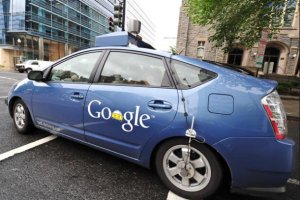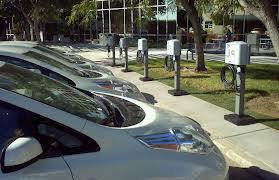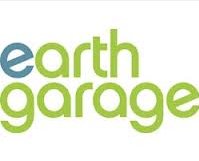 Driverless, autonomous vehicles have been gaining a lot of attention recently – whether that be through Google claiming it will build its own prototype autonomous vehicles before existing automakers reach that milestone; or Daimler AG announcing it will roll out a commercial truck by 2025 that will be able to steer, brake and accelerate without a human driver behind the wheel. Then there’s Cruise Automation, a startup company that says it will roll out a $10,000 aftermarket driverless device that so far is only suited to operate on Audi A4 or S4 vehicles.
Driverless, autonomous vehicles have been gaining a lot of attention recently – whether that be through Google claiming it will build its own prototype autonomous vehicles before existing automakers reach that milestone; or Daimler AG announcing it will roll out a commercial truck by 2025 that will be able to steer, brake and accelerate without a human driver behind the wheel. Then there’s Cruise Automation, a startup company that says it will roll out a $10,000 aftermarket driverless device that so far is only suited to operate on Audi A4 or S4 vehicles.
So what gives? Can we expect to see lots of driverless, autonomous vehicles on our roads within the next 10 years?
As far as state legislatures are concerned, four of them have already passed bills allowing autonomous vehicles to eventually make it to their roads – Nevada, California, Florida, and Michigan, plus the District of Columbia. It’s under consideration in 11 states – Hawaii, Washington, South Dakota, Minnesota, Massachusetts, New York, New Jersey, Maryland, South Carolina, Georgia, and Louisiana. And it’s failed in seven states – New Hampshire, Texas, Oklahoma, Colorado, Arizona, Wisconsin, and Oregon.
It was fascinating to see Google initially test its driverless car technology on a converted Toyota Prius hybrid. Nissan rolled out its driverless test model in a Leaf electric car. AutoTrader.com analyst Michelle Krebs thinks that driverless cars long-term will be like hybrids and electric vehicles (EVs) – they won’t take over completely but will play a role in how automakers and government officials are looking at the future of transportation. “There are certain places this approach makes sense, such as heavy commuting cities where autonomous cars could run essentially like train cars without a track — mass transit. That makes brilliant sense. Or these cars could be programmed to handle most responsibilities on long, boring drives, including commutes. In those ways, they will extend the mobility of aging baby boomers, which is where the biggest market is, if you believe that Millennials really don’t want to drive,” Krebs told Forbes.
For those autonomous vehicles that do sell in the future, Krebs thinks they won’t be driverless only. They’ll be “cars you have the choice to drive or not drive. There are so many legal and insurance and regulatory issues, and none of them are being resolved.”
There are some big questions that need to be answered in the next decade for autonomous, driverless vehicles to take off:
- If there’s a collision involving a driverless car, who will be liable? The car owner? The automaker? The state government? The insurance company? Will liability be doled out and shared by all the above?
- Then there’s the American civil liberty tradition. Will “big brother” be breathing down our necks? How much personal privacy will citizens have in the future?
I estimate that driverless, autonomous passenger and commercial vehicles will make up a large share of sales in the next 25 years – up to 25% of new vehicles sold in the US. Here are a few market forces that could shape that trend:
- Traffic congestion is getting worse all the time – as the “urbanization” trend goes strong and more Americans work in, and live in, cities. While mass transit and bicycling are gaining a lot of support, in the end, new vehicle sales will likely stay strong for years to come and traffic congestion will be getting worse. Driverless, autonomous vehicles seem to have the best shot at dealing with the gridlock problem. That will require an interdependent relationship between state highway officials, DMVs, highway patrols and city police departments, automakers, and technology suppliers like Google.
- Commercial truck makers are exploring the option. Along with Daimler, Volvo Trucks has been testing out autonomous solutions. Volvo has participated in the Safe Road Trains for the Environment (SARTRE) a European Commission-funded project. It’s a tested concept where several vehicles are electronically linked together in a “road train,” with only the lead driver in active control – many times a Volvo truck driver. Big rigs could play a critical role, as they do take up a lot of space on highways and have a major impact on safety and the flow of traffic.
- Cars are already going in that direction. You’ve probably noticed that with every new model year, automakers brag about offering the coolest, advanced technologies with the latest in connectivity, safety, fuel efficiency, and convenience. After recently test driving a driverless car, Rep. Larry Bucshon (R—Ind.) said it was “the next generation of cruise control.” EVs are typically considered to be part of the cool technology trend – especially the Tesla Model S. For some people, driverless cars will probably be a logical extension of where all of the technology seems to be inevitably headed.
- The perks will be getting better all the time. If you ever own a driverless car, there will be several benefits gained. For one, the former-driver-now passenger could do something else besides drive the car – play video games, watch a “Breaking Bad” episode, finish up some work, read a mystery novel, or talk to their significant other over a two-way TV screen. Car commuters will become more like train passengers, feeling more relaxed and replenished when they come home. There’s also the likelihood that riding in a vehicle will become safer as more and more of them become automated and driverless. Then there’s improved fuel economy, as these automated vehicles will probably drive routes and speeds based on efficiency. Best of all, gridlock will probably recede as driverless systems place vehicles at peak performance in speeds driven, braking, lane changes, fluctuations tied to weather conditions, and other factors eliminating human error. Cars will be interconnected and can communicate with each other, making traffic smoother and safer.




